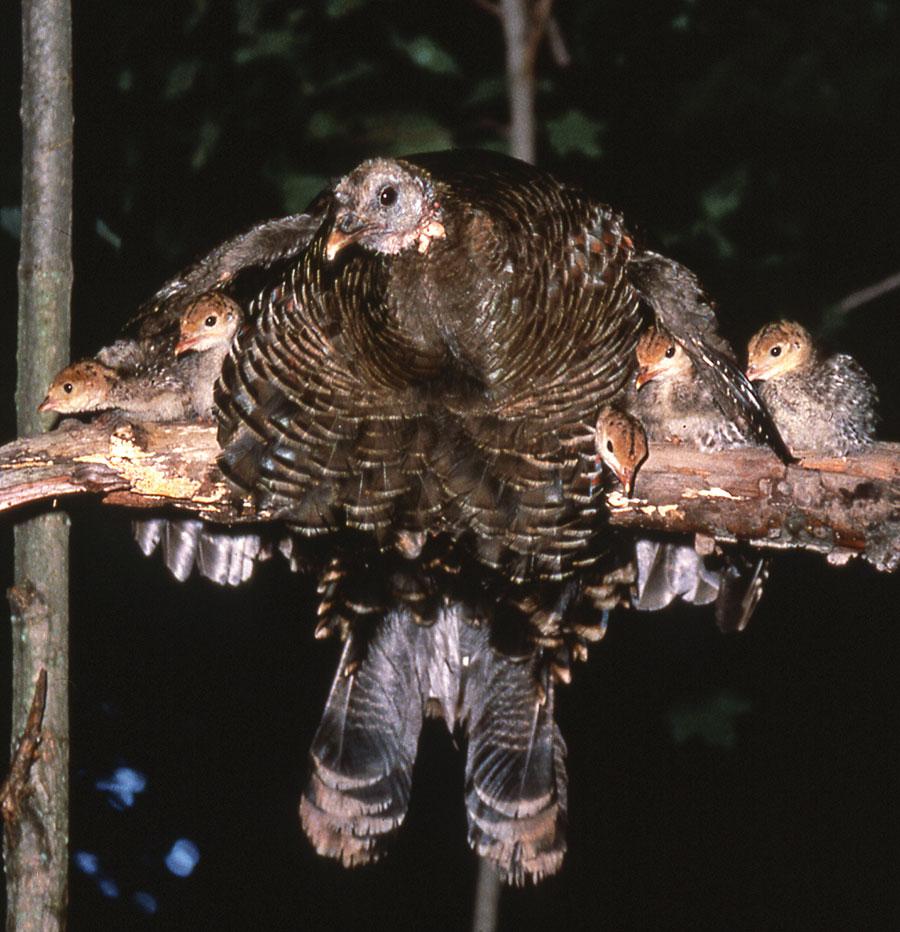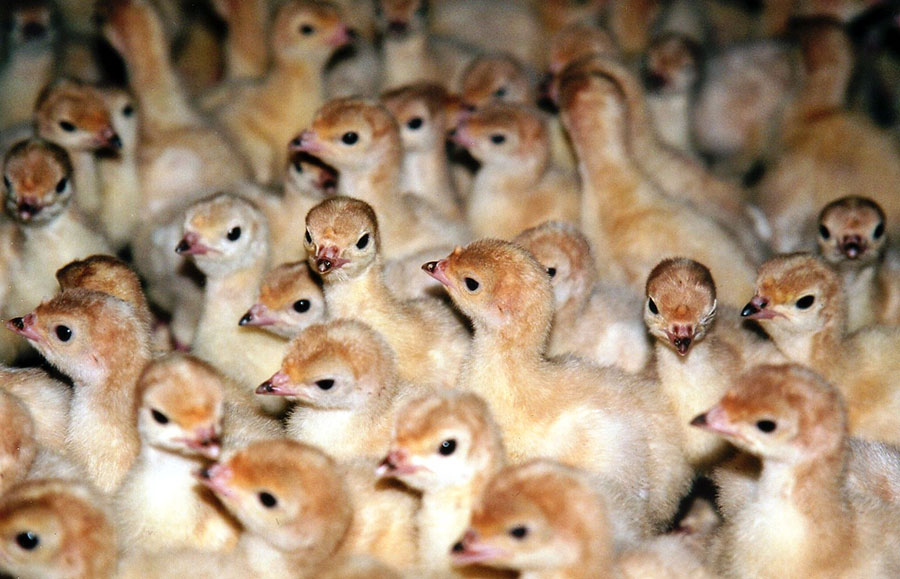A Mother Turkey and Her Young - “Their Kind and Careful Parent”

From More Than a Meal: The Turkey in History, Myth, Ritual, and Reality
By Karen Davis, PhD
Young turkeys need their mothers. Unlike baby songbirds and raptors, whose parents are absent for long periods gathering food to take back to their young in the nest, it is unnatural for young groundnesting birds such as turkeys and chickens to be separated from their parent. The mother turkey is the center of the young birds’ universe. During the first month when the young require brooding – being sheltered under the mother bird’s wings at night and periodically gathered beneath her wings for warmth and comfort during the day – the youngsters, called “poults,” will panic if separated from their mother. The terrified baby turkey gives out a “lost call” to which the mother bird responds by running towards her little one, crouching and gathering him comfortingly under her wing.
People have become so used to seeing pictures of turkeys of uniform age and sex crowded miserably in a shed awaiting their death that it’s a shock to learn about the lively poults and their mothers chasing grasshoppers in a meadow, sunning themselves and dustbathing together, leaving, in the words of naturalist Joe Hutto in his book Illumination in the Flatwoods: A Season with the Wild Turkey, “tiny, bowl-shaped impressions the size of small turkey bodies.”
A delightful picture of the wandering hen and her brood appears in A.W. Schorger’s book The Wild Turkey:
They hurry along as if on a march to some particular point, sometimes tripping along in single file, one behind the other, and at other times scattered through the woods for fifty yards or more. When on these scattered marches it is pleasant to note some straggling youngster as he wanders out of sight of the main flock in an attempt to catch a fickle-winged butterfly, or delays by the wayside scratching amid the remains of a decayed log in search of a rich morsel in the shape of a grubworm. When he discovers that he is alone, he raises himself up, looks with his keen eyes in every direction for the flock, and, failing to discover them, gives the well-known coarse cluck. Then he raises his head high in the air, and listens intently for his mother’s call. As soon as it is discovered that one is missing, the whole flock stops, and the young turkeys raise their heads and await the signal from their mother. When she hears the note of the lost youngster, she gives a few anxious “yelps,” which he answers, and then, opening his wings, he gives them a joyous flap or two and with a few sharp, quick “yelps,” he goes on a run to join his companions.

During the first few weeks of life, young turkeys sleep on the ground under their mother’s wings. After a month or so, they leave the ground and fly at night to a large low branch, where they “place themselves under the deeply curved wings of their kind and careful parent, dividing themselves for that purpose into two nearly equal parties.” Thus did Audubon visualize the bond between the mother turkey and her young brood. So far removed are most of us from this scene that the picture on the cover of this magazine and my book, of a turkey hen roosting on a tree limb surrounded by her poults, not infrequently raises the question, “What kind of a bird is that?”
According to wildlife biologist William Healy, the social life of turkeys begins well before hatching, when they are inside the egg, and is well developed by the time the young birds leaves the nest. Vocal communications between the turkey hen and her embryonic chicks “is critical to the survival of the chicks,” whose long association with their mother, for nearly half a year after they hatch, “seems essential,” he writes. By contrast, the process of “hatching eggs in incubators and raising poults in mechanical brooders interrupts the social experiences” that form the foundation for a normal and happy life in turkeys.
– From chapter 8, “The Mind and Behavior of Turkeys,” in More Than a Meal: The Turkey in History, Myth, Ritual, and Reality by Karen Davis, PhD, published by Lantern Books & available from UPC. $20